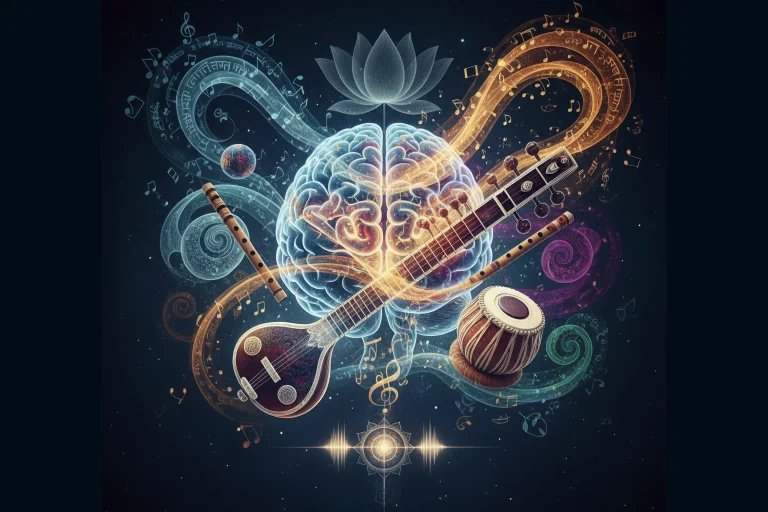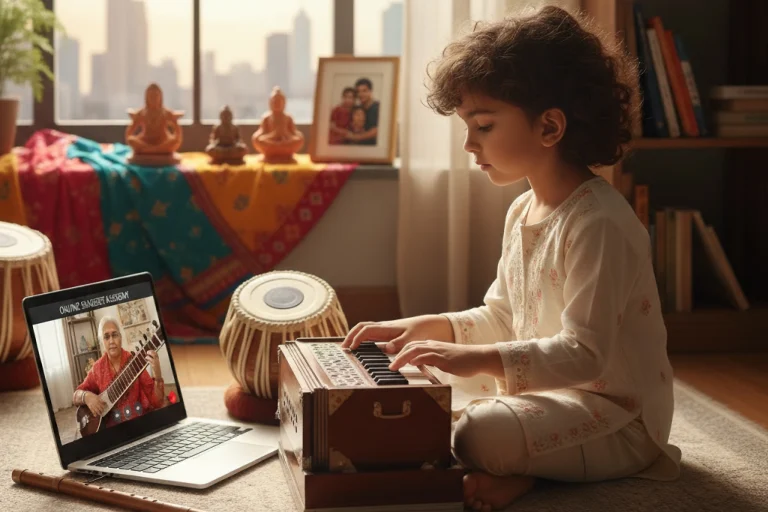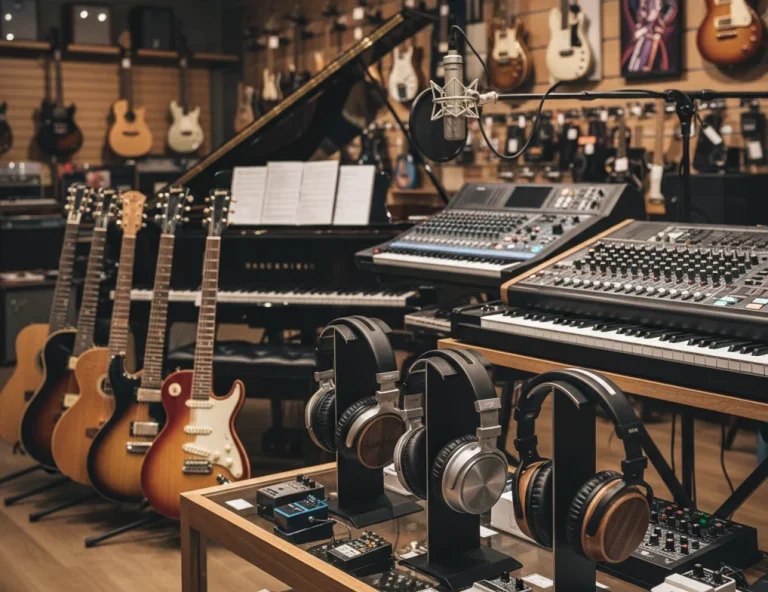All Topics
- Alchemizing Music Concepts for Students
- Artist Spotlight
- artium gift card
- Artium Maestros
- Artium News
- buying guide
- Carnatic Music
- Devotional Music
- Editorials by Ananth Vaidyanathan
- Film Music
- Guitar
- Hindustani Classical Music
- Indian Classical Music
- Indian Folk Music
- Insights
- Instruments
- Karaoke Singing
- Keyboard
- Kids Music
- maestros
- Music Education
- Music for Kids
- Music Industry
- Music Instruments
- Music Legends
- Music Theory
- Music Therapy
- Piano
- piano guide
- Success Stories
- Tamil Film Music
- Telugu Film Music
- Time Theory
- Tools
- Uncategorized
- Vocal Singing
- Vocals
- western classical music
- western music
- Western vocal music
Indian Classical Music, Music Education, western classical music
How Does Emotion and Technique Turn Music Into True Communication?
How Does Emotion and Technique Turn Music Into True Communication?

Table of Contents
At Artium Academy, we believe that music is not just something you learn—it’s something you live, and it’s a foundational life skill. Every artist, whether beginner or legend, knows this truth: music is fragile yet powerful. Fragile because it is born of emotion—tender, unpredictable, deeply human. Powerful because, once shaped through skill and discipline, it transcends the singer and touches the souls of millions.
If you’ve ever cried listening to a melody or felt goosebumps at a live performance, you know this power. Music is more than sound; it is a communication between the heart and the voice, between the performer and the listener.
But here’s the paradox: music doesn’t always come easily. Even the most incredible singers have moments when they cannot feel a song, or when they feel so much that their voice begins to break. Life brings heartbreaks, grief, failures, rejections, exhaustion—and yet, the show must go on.
That’s where the right online music classes make all the difference. Opting to learn from online music courses will help aspiring musicians master the delicate balance between emotion and technique, enabling them to deliver unforgettable performances, no matter what life brings.
Learning Music as the Art of Feeling
At its core, music is an emotional experience. Every song is a story, a moment, a reflection of life.
When you sing, you are not simply repeating notes. You are stepping into a character, inhabiting a story, embodying a truth. You are reacting to lyrics, painting a mood, and inviting the audience into your world.
That’s why we often say: “Your voice should sing, but your mind should speak.”
Without thought, emotion becomes chaos. Without emotion, technique becomes lifeless. Real artistry begins when the mind guides the heart and the heart guides the voice.
Music as Communication
Consider the story of Lata Mangeshkar ji. When she was recording for A.R. Rahman, she paused in the empty studio and said she couldn’t sing without someone to sing to. To support her, Gulzar ji quietly sat inside the booth. That one presence was enough for her to pour her heart into the song.
That moment shows us that music is a form of communication. It is not just about singing well; it is about connecting with someone on the other side.
Sonu Nigam’s Singing Style: When Technique Carries Emotion
Our Patron-in-Chief, Sonu Nigam ji, once shared a deeply moving story. When his mother was terminally ill, he was called to record a film song. He confessed that he wasn’t emotionally in the right state—his heart was heavy with grief, far away from the song’s required mood. Yet, he still had to record. And he did.
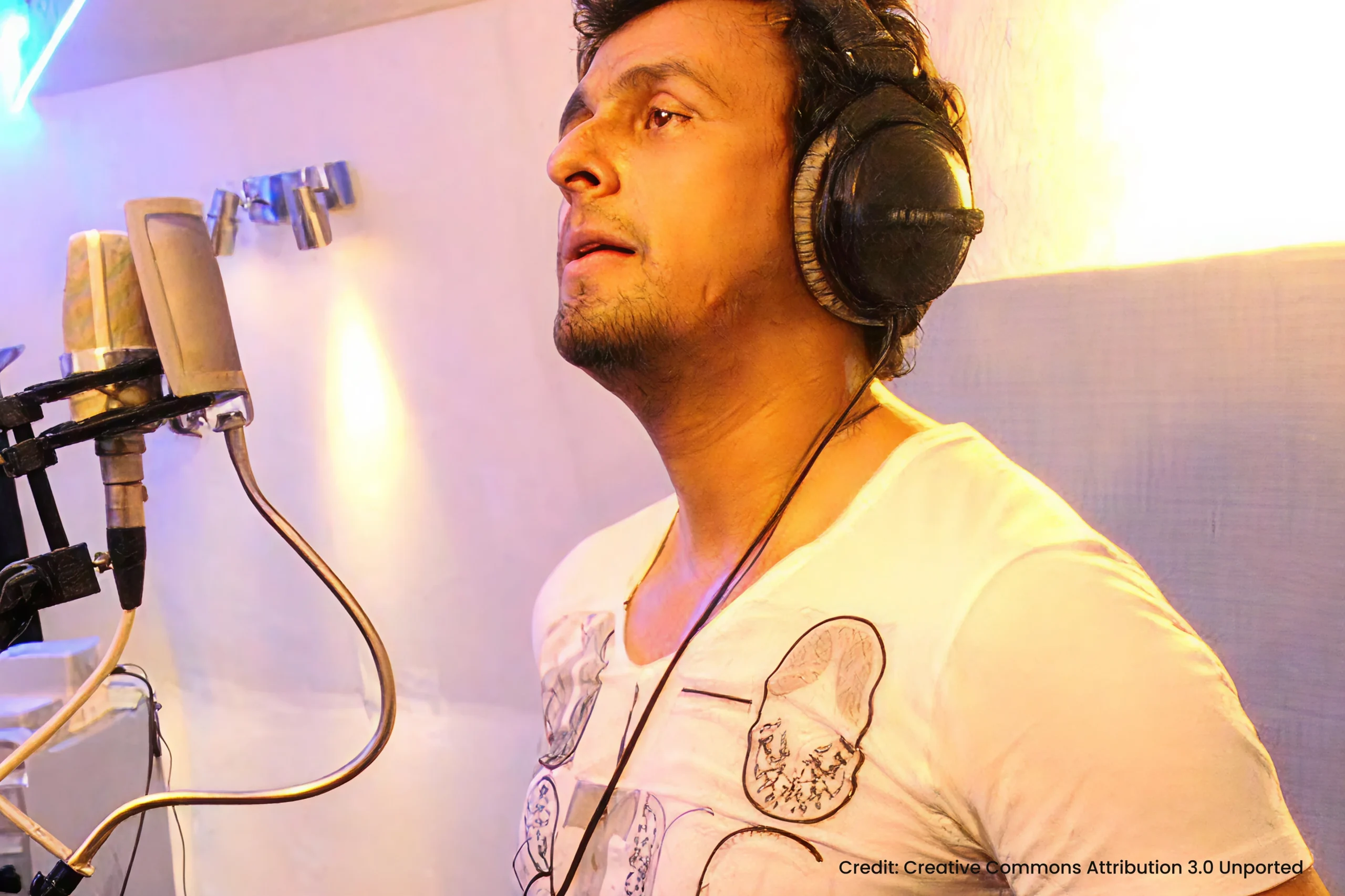
How? By leaning on his technique, he commands over dynamics, phrasing, and vocal control. His skillful voice
carried what his heart could not. Ironically, the song went on to become a blockbuster hit.
This teaches us that:
- Sometimes, emotion alone carries a performance.
- Sometimes, technique must rescue you.
But when both unite—when you can react to lyrics with your heart and deliver them with skill—you unlock the true magic of music.
My Experience as a Music Teacher at Artium Academy: Devotion to Students
I have experienced a similar truth in my own journey at Artium Academy. When I take online singing classes for my students, I find it effortless to open my heart. Why? Because of devotion. Because of surrender. Because of love. To me, teaching is not just about passing on technique—it is about giving myself fully to those who trust me with their learning. In front of my students, I don’t need to “act” the emotion.
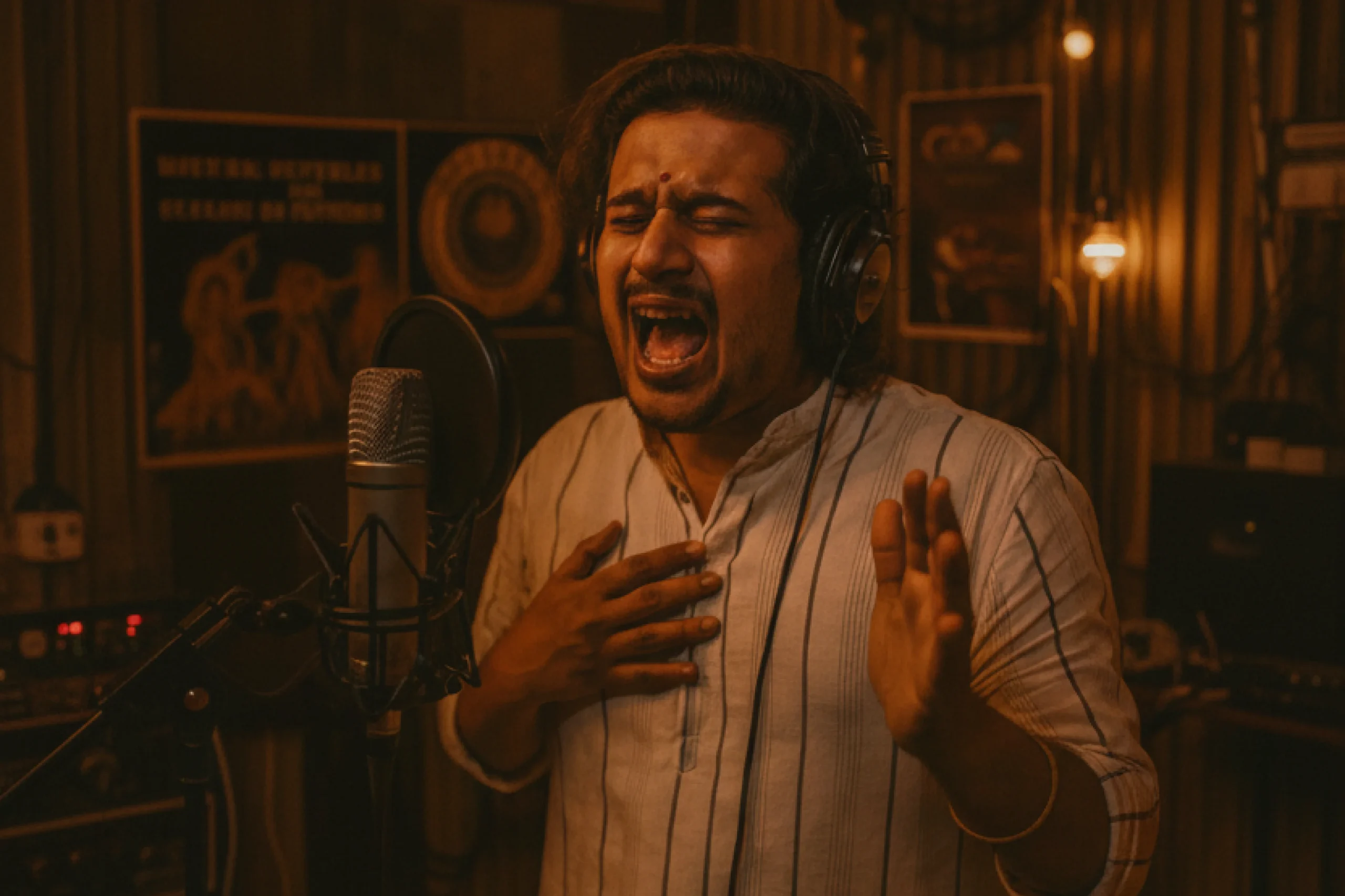
My voice flows with sincerity because I am fully devoted to their growth. This is also music: a living example of surrender and communication. When you love, when you surrender, when you devote yourself—your heart opens, your voice follows, and your music naturally becomes authentic.
But What If You Can’t Feel the Song?
The reality is, no artist can always feel every song. Life is unpredictable, and often artists face:
- Heartbreaks and losses
- Rejections and career lows
- Anxiety, insecurity, burnout
- Emotional numbness
And yet, some of the greatest songs ever recorded were sung during such times. Why? Because technique became the lifeline.
Singing Technique: Your Constant Companion
Emotion comes and goes. Technique remains constant.

At Artium, we emphasize that technique is not meant to suppress emotion—it is meant to support it, to carry it, and to balance it when needed.
Key techniques include:
- Vocal Dynamics – Using softness for vulnerability, strength for passion.
- Modulation – Shaping pitch and tone to reflect colors of feeling.
- Breath Control – Sustaining lines with clarity and stability.
- Phrasing and Timing – Using pauses, accents, and rhythm to tell the story.
- Diction and Clarity – Ensuring lyrics communicate with precision.
When emotion overwhelms, technique steadies. When emotion runs dry, technique paints it back into life.
Maintain Balance: Where Artistry Begins
Too much raw emotion may blur diction or break pitch. Too much technique may feel robotic. The real artistry begins in balance.
Emotion guides intention. Technique ensures delivery. This is what separates a singer from a communicator.
Try This: Experiment for Yourself
To understand balance, try this at home:
– Pick a song you love.
– Sing it only with emotion. Don’t worry about breath or clarity—just pour your heart. Notice where you falter.
– Sing it only with technique. Focus on accuracy and polish, but avoid a cold, clinical tone. Notice the difference.
– Finally, sing with both. Let emotion shape the intention, let technique shape the sound.
Reflect: Which version felt alive? Which would touch your audience most?
The Art of Balancing Emotion and Technique
Working with emotions in music is as powerful as it is challenging. When a singer truly opens their heart, they touch a space that is raw, pure, and often overwhelming. But this emotional openness must be guided by awareness—knowing when to switch on that emotional intensity and when to switch it off gracefully.
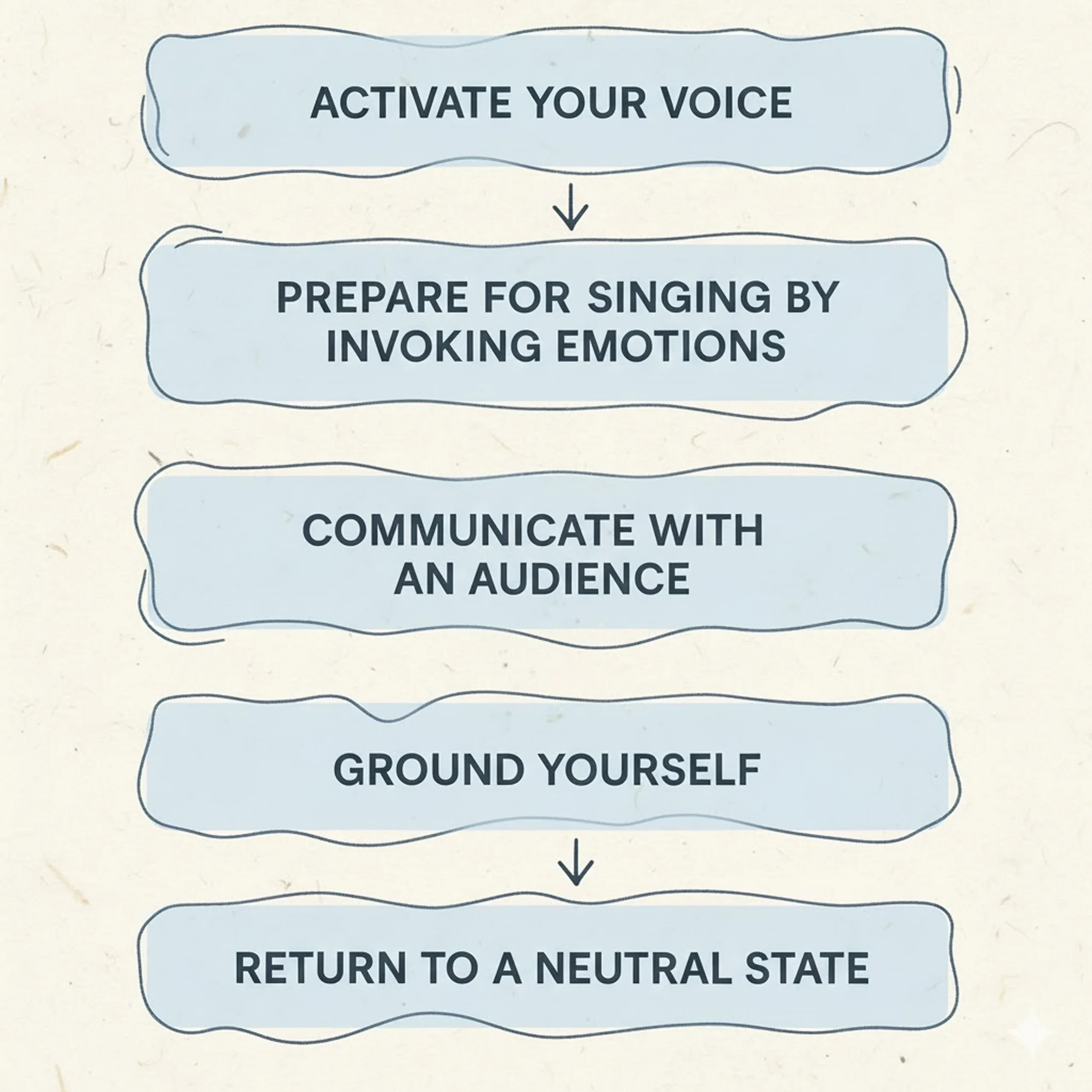
Every artist is, in some way, emotionally sensitive—our feelings are our greatest strength, but also our greatest vulnerability. Without grounding, this sensitivity can become restless or unstable. Many creative minds throughout history have struggled with this, sometimes losing balance and turning to addictions or destructive outlets.
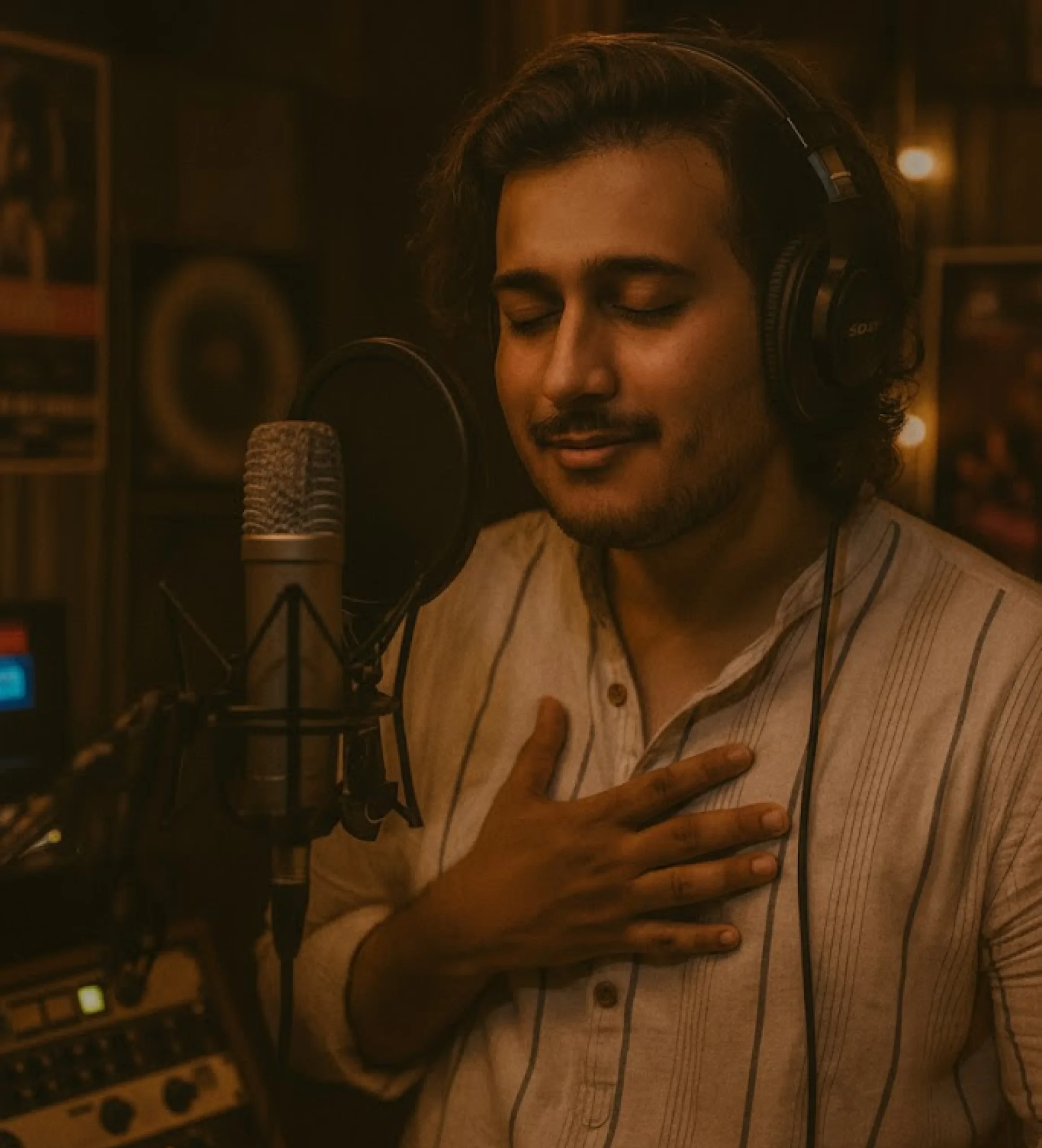
That’s why grounding techniques—through breath, discipline, devotion, and spiritual practice—are essential. They help us return to stillness after evoking deep emotions. When emotion and technique move together under the light of self-awareness, we gain mastery—not just over music, but over our inner world.
In the end, true artistry lies in that beautiful flexibility—to feel deeply, yet remain centered, to let the emotion flow when we sing, and to release it with grace when the music ends.
Artium Connect: Turn Emotion Into Mastery
Reading about balance is one thing. Living it requires guidance, discipline, and mentorship from the best. That is what Artium School of Music offers. At Artium, our music courses are designed by living legends like Chitra ji, Sonu Nigam ji, Aruna Sairam ji, Shubha Mudgal ji, and many more. Their combined wisdom ensures that every student learns in our online music classes not just how to sing, but how to communicate through song.
GRMP-Certified Programs – Our Globally Recognized Music Programs which are ofqual- accredited comes with global standards of certification spans across different levels of learners: Beginner, Intermediate, Proficient, and Advanced levels with over 252 lessons, covering every aspect of singing—from technique to expression.
Graded Certification – Through graded examinations, you can earn a globally acknowledged music certificate with value equivalent to Trinity College London, ABRSM, or RSL.
Personalized 1:1 Classes – Learn directly from expert faculty who guide you step by step, ensuring that you grow with confidence.
Performance Opportunities – Students showcase their talent in Artium Showcases, Artium Superstar events, and even get the chance to release singles and covers with renowned music banners.
Learning With Legends – You don’t just study music. You live it—with guidance from those who have defined Indian classical and contemporary music for generations. At Artium, we prepare you not only to sing beautifully, but to speak through song, balance emotion with technique, and communicate through your art.
If this blog has inspired you, take the next step. Join Artium Academy today and take a free trial to feel the difference, and let us help you turn passion into a globally recognized, professionally nurtured journey in music.
Because music is not just an art. It’s a performing art. Moreover, it is also about communication. At Artium Academy, this balance of emotion, technique, and awareness is at the heart of every lesson. Through guided mentorship, structured training, and soulful practice, students learn not just to sing—but to express, ground, and transform through music.
FAQs
One conveys feelings and emotions through music by connecting deeply with the inner self and allowing that emotion to flow honestly through voice, tone, and expression. It’s not about technique alone—it’s about surrender, awareness, and letting the music become the language of your heart.
Different emotions in music are often expressed through rasa (essence or mood). The primary emotions include:
- Shringara (Love and Beauty) – romance, devotion, tenderness.
- Hasya (Joy and Laughter) – playfulness, happiness, humor.
- Karuna (Compassion and Pathos) – sadness, empathy, longing.
- Raudra (Anger) – intensity, power, protest.
- Vira (Courage and Heroism) – strength, confidence, determination.
- Bhayankara (Fear) – tension, uncertainty, suspense.
- Bibhatsa (Disgust) – rejection, aversion, moral resistance.
- Adbhuta (Wonder) – awe, curiosity, spiritual astonishment.
- Santa (Peace) – calmness, contentment, spiritual stillness.
Every musical phrase can embody one or more of these rasas—creating a living dialogue between emotion and sound.
Styles of music that express deep emotions are those that allow space for improvisation, subtlety, and emotional surrender. Some of the most powerful include:
- Indian Classical Music (Hindustani & Carnatic) – through ragas, each mood (rasa) is deeply explored with devotion and feeling.
- Sufi and Bhakti Music – express divine love, longing, and surrender through soulful melodies and poetry.
- Blues and Soul – channel pain, resilience, and heartfelt emotion through expressive vocals and rhythms.
- Jazz – conveys emotion through improvisation and personal interpretation.
- Western Classical (Romantic Era) – captures deep passion, melancholy, and transcendence through harmony and dynamics.
- Folk Music – expresses raw human emotions and life experiences in a simple, heartfelt way.
In every style, the depth of emotion comes not from complexity, but from honesty, intention, and inner connection.
Balancing emotion and technique in singing is essential because technique gives structure to your voice, while emotion gives life to your expression.
If there’s only emotion without technique, the voice may lose control or clarity.
If there’s only technique without emotion, the singing sounds mechanical and empty.
When both are balanced, the singer can express feelings freely while maintaining control, beauty, and endurance—allowing the listener to feel the true essence of the music.
Artium Academy helps students grow as singers by combining personalized mentorship, scientific vocal training, and emotional artistry.
Through expert-guided live classes, structured graded courses, and feedback from top musicians, students develop strong vocal technique, expression, and confidence. Artium also nurtures musical understanding, stage presence, and emotional connection, helping each learner not just sing accurately—but sing soulfully and authentically.




